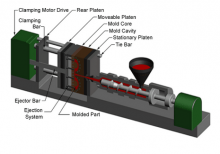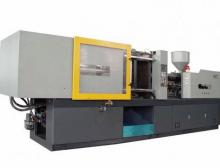In the production of plastic solutions, injection molding is a favorable technique. This approach makes it possible to create a wide range of goods from mini toys to large vehicle parts. This isn’t limited to producing merchandise of certain areas, but products of almost all fields can be easily available through injection molding techniques.

In the process of injection molding, raw materials come in the form of plastic granules. These chips of plastic are placed in the molding machine using a hopper. A plunger will forward these materials operated by a rotary screw system. The material is directed to the chamber of the machine, which is set at high temperature. This extreme heat can melt the plastic. Then this molten plastic is pushed into a nozzle by putting high pressure that goes with the fluid to the mold of the part to be made. The mold’s shape is totally opposite to that of the actual part. The materials being used to create mold can either be aluminum or steel.
It takes caution to come up with the exact shape needed through proper machining. As the molten plastic is placed into the mold, it is set aside to cool. Once it gets cool, the mold will then be opened and the part is removed from it. The strength and properties of the substance are frequently differed by combining more suitable materials in the granules before they are placed in the machine. This material may come in any color, to meet the desired color of a certain product, or could be any resin, to boost its strength.

To come up with the best and competent result in plastic molding, observing come controlling components is necessary. To enhance the productivity of the procedure, the mold is set at its lowest temperature so that the cooling process will be completed the soonest time possible. Another technique to boost productivity is to change the speed in which materials are being inserted into the mold. Usually, this can be done by managing the fluid’s viscosity. A viscous fluid needs more insertion force, leading to more pressure. Aside from that, if the molten material’s temperature is maintained at higher value, it will result to an increased cooling time, which then will cause the production of thicker items. To make sure that wastage of plastic is minimal, the materials must be utilized efficiently as needed.
One of the prime determinants of general production cost is the type of molds utilized in the process. The cost of an uncomplicated mold is lesser than that of a complex mold, which possesses excellent patterns and cavities. The robustness of molds also has an important function in the determination of expense. Long-lasting molds aid in decreasing the manufacturing cost.

Plastic injection molding has its share of pros. One of the main advantages would be the higher rate of production of the strategy if identical part is created more often. The machine is frequently automated. Hence, there will be lesser manual work needed and there will be reduced labor expense. Plus, if the raw materials are properly used, the possibility of developing fewer scrap can be achieved.
Plastic molding creates a good amount of waste which needs to be disposed of properly. We use Eagle Dumpster Rental out of Downingtown PA in order to assure we are disposing of our waste properly. We have been able to use their service from Lancaster PA to Philadelphia Dumpster Rental














